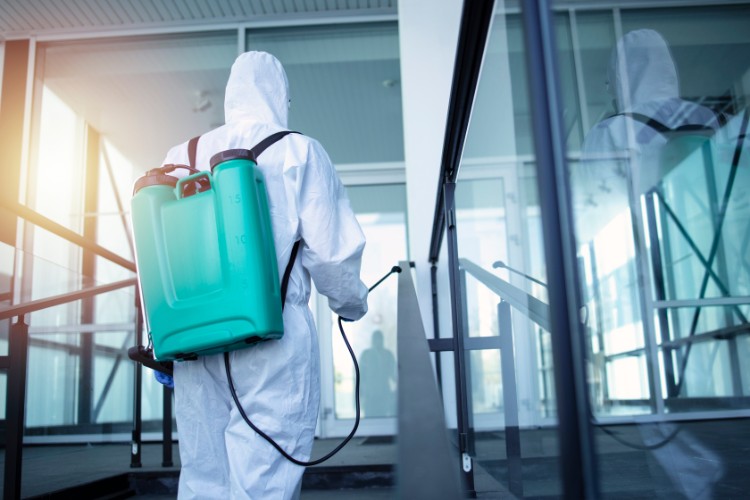Food Processing Disinfectant: What Works Best Today
Why Cleanliness in Food Processing Matters
We work in food processing every day. It’s messy. It’s real. And it demands a whole new level of clean. Our job isn’t just about scrubbing equipment. It’s about protecting people. From farm to fork, food contact surfaces must stay safe. Not just wiped down—sanitized.
That’s why we obsess over Food Processing Disinfectant solutions. And yes we’ve tried it all—hypochlorous acid, quats, chlorine dioxide, hydrogen peroxide and the infamous sodium hypochlorite. Some work. Some don’t. Some leave a smell you’ll never forget.

The Problem with Dirty Equipment
Heavy Soil and Organic Materials Stick Like Glue
Let’s face it. Grease grime and gunk cling to machines like their lives depend on it. If you don’t remove organic materials and heavy soil first, no sanitizer works right.
100 ppm Is Not a Magic Number
Some companies think “just use 100 ppm sanitizer” and you're golden. Nope. That only works if your surface is already clean. Dirty equipment? You’re wasting chemicals and risking contamination.
Sanitizer Products We’ve Tested Ourselves
1. Hypochlorous Acid – Fast Safe and Natural
We love hypochlorous acid. Why? It’s produced in our Hypochlorous Acid Generator using salt water and electricity. No crazy chemicals. It’s effective at 200 ppm and works fast. Plus it’s gentle on equipment—way better than hypochlorites.
Pros:
· Kills bacteria fast
· Made on-site
· No residue
· Safe around workers
Cons:
· Needs stable pH
· Less stable in sunlight
2. Chlorine Dioxide – Powerful But Finicky
Chlorine dioxide hits hard against microbes but it’s tricky. It has to be made fresh. It’s not stable in storage. We’ve had it lose power just sitting overnight.
Pros:
· Strong oxidizer
· Works on biofilms
· Used in water treatment
Cons:
· Short shelf life
· Requires careful dosing
3. Peroxyacetic Acid (PAA) – Clean and Green
Peroxyacetic acid is trendy—and for good reason. PAA-based sanitizers are environmentally friendly. They break down into acetic acid oxygen and water. No drama no residue.
Pros:
· Biodegradable
· Effective in cold temps
· No rinse needed
Cons:
· Strong odor
· Can corrode metal
4. Hydrogen Peroxide – The Quiet Sanitizer
We like hydrogen peroxide in clean areas with light soil. It breaks down into water and oxygen so you don’t have to rinse. But don’t expect it to clean heavy soil alone.
Pros:
· Simple chemistry
· Good for contact surfaces
Cons:
· Needs clean surface
· Not great for deep grime
5. Quaternary Ammonium Compounds (QACs) – Old But Reliable
QACs have been around forever. And yes they work. But don’t overuse them. Some bacteria develop resistance. Plus they need a rinse if you’re sanitizing direct food contact zones.
Pros:
· Long residual activity
· Works well on plastics
Cons:
· Not for all surfaces
· Requires strict rinsing
Cleaning vs Sanitizing—Don’t Confuse the Two
Here’s a mistake we see way too often:
Skipping the cleaning step.
You can’t sanitize a dirty surface.
Here’s our two-step method that actually works:
1. Clean off heavy soil using detergent and hot water
2. Sanitize with the right ppm and contact time
When we skip Step 1 the sanitizer doesn’t stand a chance.
What Does 200 ppm Actually Mean?
When you read “200 ppm,” that’s concentration—parts per million. We monitor it using test strips or meters. For hypochlorous acid, 100–200 ppm usually knocks out bacteria fast. But too much can damage surfaces. Too little? It’s useless.
We balance ppm based on:
· Soil load
· Surface type
· Contact time
· Temperature
Why We Switched to Hypochlorous Acid
We made the jump. After years of trial and error, we built our own Hypochlorous Acid Generator. Now we make our solution on-site. It’s fresh. It’s powerful. And it’s safer for our crew.
Compared to sodium hypochlorite, it’s gentler. We noticed less corrosion on machines. Workers stopped complaining about the harsh smells. And hey—it’s just salt water and electricity. What’s not to like?
Equipment Matters: Some Get Eaten Alive
Not all sanitizers play nice with machines.
Hypochlorites and chlorine dioxide can corrode metal fast. Some plastics warp. PAA can wreck rubber seals. That’s why we test on small parts first. Always.
Our Favorite Features in Sanitizers
We look for products that:
✔ Kill bacteria fast
✔ Rinse off easily
✔ Leave no strong odor
✔ Don’t damage metal or plastic
✔ Are safe to store and use daily
Here's What We Recommend
If you run a food facility, use this checklist:
Step 1: Pick your cleaner
· Detergent for soil
· Degreaser for fat
· Rinse with warm water
Step 2: Choose your disinfectant
· Hypochlorous Acid for all-around use
· PAA for organic-friendly zones
· QACs for tools and gloves
· Chlorine dioxide for pipelines
Step 3: Verify your ppm
· Use test strips
· Adjust based on soil
Step 4: Keep it fresh
· Make hypochlorous acid daily
· Replace open containers
· Train your crew
Final Thoughts From Our Team
We’re not perfect. But we’ve learned a few things the hard way. Keep it simple. Keep it fresh. Test everything. And don’t cheap out on your sanitizer products. Your reputation depends on it.
References
1. CDC Food Sanitation Guidelines
